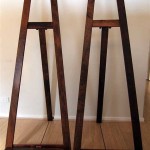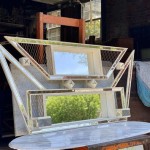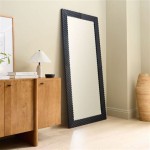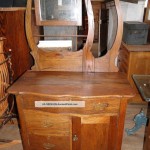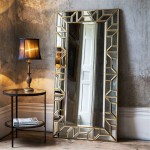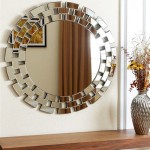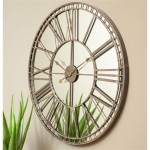Silver Baroque Mirror: A Timeless Piece of Art
Silver baroque mirrors represent a captivating blend of history, artistry, and functionality. Their ornate frames, steeped in the opulent baroque style, add a touch of grandeur and elegance to any space. Understanding the historical context, design elements, and various types of silver baroque mirrors available can aid in appreciating their timeless appeal and making informed choices when selecting one.
History and Origins of Baroque Mirrors
The Baroque period, spanning roughly from the 17th to the mid-18th century, was a time of elaborate ornamentation and dramatic artistry. Originating in Italy, the style quickly spread across Europe, influencing architecture, art, and furniture design. Mirrors, previously rare and expensive, became more accessible during this era, providing artisans with new canvases for their creativity. Baroque mirrors reflected the era's penchant for extravagance, featuring heavily embellished frames carved with intricate details.
Key Design Elements of Silver Baroque Mirrors
The defining characteristic of a baroque mirror is its ornate frame. Typically constructed from wood, these frames were often gilded or silvered, adding to their luxurious appearance. Common motifs include acanthus leaves, scrolls, shells, cherubs, and floral garlands, all intricately intertwined to create a sense of dynamic movement and opulence. The silver finish adds a cool, refined touch to the warmth of the underlying wood, creating a striking contrast.
Types of Silver Baroque Mirrors
Silver baroque mirrors are available in a variety of shapes and sizes to suit different needs and preferences. Large, rectangular or oval mirrors can serve as statement pieces above a fireplace or console table. Smaller, round or square mirrors can be used to create decorative groupings or to add a touch of elegance to a powder room. Some common types include:
- Full-Length Mirrors: These grand mirrors are ideal for bedrooms or dressing areas, providing a full view and adding a sense of grandeur.
- Overmantel Mirrors: Designed to be placed above a fireplace, these mirrors often feature particularly elaborate frames and serve as a focal point in a room.
- Trumeau Mirrors: A trumeau mirror incorporates a painting or decorative panel above the mirror itself, further enhancing its artistic appeal.
- Handheld Mirrors: Smaller, handheld mirrors often echoed the ornate design elements of larger wall mirrors, providing a luxurious personal accessory.
Materials and Construction
Traditionally, baroque mirror frames were carved from wood, often walnut or oak due to their strength and ability to hold intricate detail. The silvering process involved applying thin sheets of silver to the back of the glass, creating a reflective surface. Modern techniques often involve using silver-toned paints or other finishes to achieve a similar effect. The quality of the materials and craftsmanship significantly impacts the overall aesthetic and value of the mirror.
Incorporating Silver Baroque Mirrors into Modern Interiors
While rooted in history, silver baroque mirrors can seamlessly integrate into contemporary interiors. Their ornate frames provide a striking contrast against minimalist backdrops, adding a layer of texture and visual interest. When incorporating a silver baroque mirror into a modern setting, consider balancing its opulence with simpler surrounding décor. Avoid overcrowding the space with other ornate pieces to allow the mirror to stand out as a focal point.
Caring for and Preserving Silver Baroque Mirrors
Proper care is essential to maintain the beauty and integrity of a silver baroque mirror. Dusting regularly with a soft cloth will help prevent the buildup of grime. Avoid using harsh chemicals or abrasive cleaners, which can damage the delicate silver finish. For antique mirrors, consulting a professional restorer is recommended for any significant repairs or cleaning.
Identifying Authentic Antique Silver Baroque Mirrors
For collectors and antique enthusiasts, identifying an authentic antique silver baroque mirror requires careful observation. Examining the frame for signs of age, such as wear and tear, patina, and the type of wood used, can provide clues. Authentic antique mirrors often exhibit imperfections in the glass due to the historical silvering process. Consulting with a reputable antique dealer or appraiser is recommended for verifying authenticity and assessing value.

Baroque Mirror Silver Horizontal Versmissen Antiques

Silver Baroque Mirror

Silver Baroque Mirror Oval Framed

Wall Mirror 85 Cm Old Silver Oval Baroque Hanging

Vidaxl Wall Mirror Baroque Style 23 6 X15 7 Silver Kroger

Huge Classic Baroque Mirror Antique Silver Leaf Made In Italy Norway

Baroque Mirror Silver Versmissen Antiques

Vidaxl Wall Mirror Baroque Style 23 6 X23 Silver Com

Tehome Cummons 24 In W X 35 H Small Baroque Ornate Arched Framed Wall Mounted Bathroom Vanity Mirror Antiqued Silver Va0009 The Home Depot

Baroque Heavy Silver Framed Mirror In 5 Sizes English Decorations Classic Furniture Gifts And Mirrors

